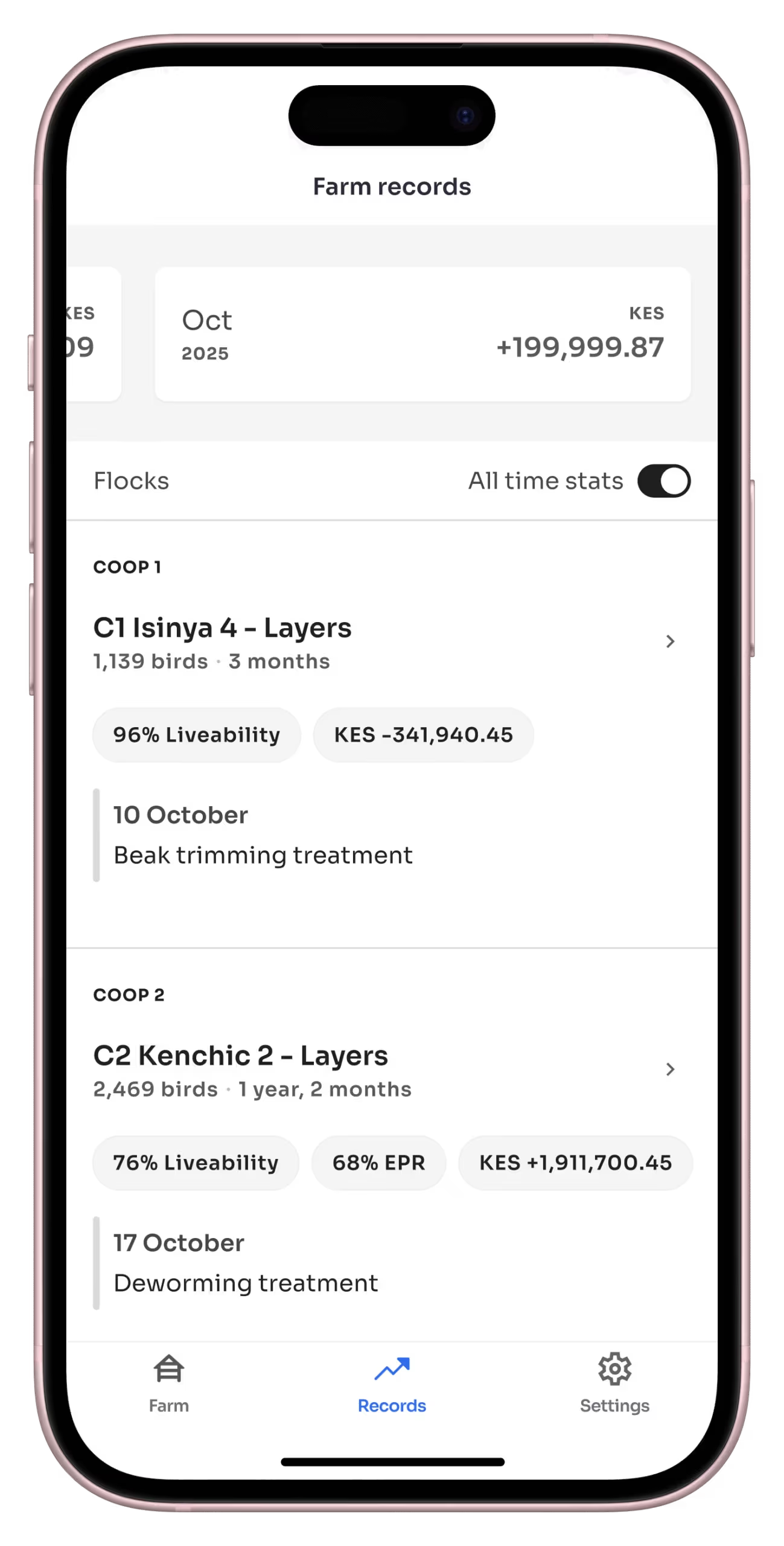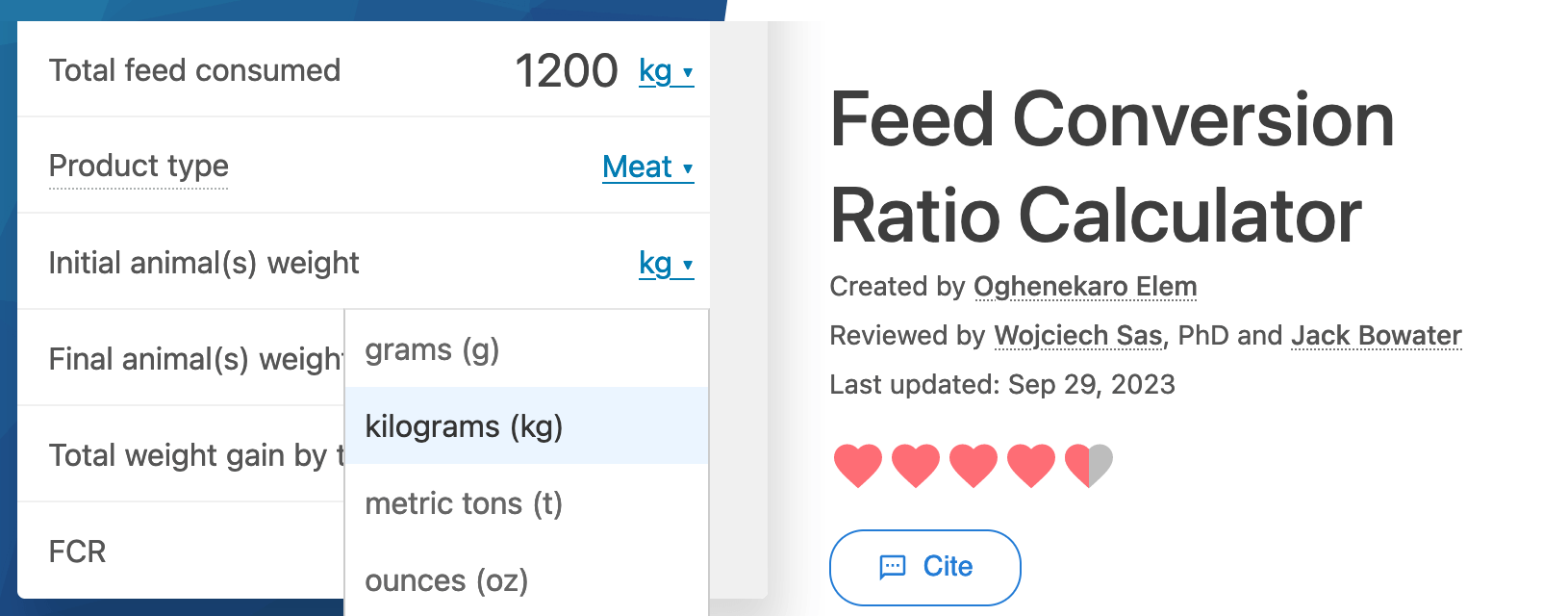Poultry feed conversion ratio (FCR) is an important indicator of poultry performance. FCR is a measure of the efficiency by which poultry birds convert feed to body weight or produce e.g. eggs.
A high FCR score means that the cost of feeding a poultry flock is high. A low FCR score means the cost of feeding a flock is low. You may also be interested in the importance of monitoring poultry bird weight.
A high FCR score indicate that a poultry flock is not optimally productive. On the other hand, a low FCR score indicate that a poultry is productive.

How to calculate poultry feed conversion ratio
FCR can be calculated in at least two ways. For broiler birds and layers birds that have not yet started laying eggs, the following applies:
1: FCR = Amount of feed consumed / Weight gained For layers birds that are producing eggs, FCR can be calculated as:
2: FCR = Amount of feed consumed / Mass output Output for a layers flock include both weight gained and eggs produced in a given period.
FCR differs by country. As of 2011, in the US, a broiler maturing in 39 days had an FCR of 1.6. In the same year, a layers bird producing 330 eggs per year had an FCR of 2.

Poultry feed conversion ratio calculators
FCR score is a calculation applicable to various livestock types.
Lucky for you, a simple Google search for FCR calculator will surface respective web and mobile apps.

Omni calculator FCR calculator is one example of several FCR calculator you can find on the internet. Such FCR calculators help determine what poultry records you need to calculate FCR. Furthermore, you don’t have to do any manual calculations. You simply need to input respective numbers and the app does the rest for you.
Additionally, there are mobile apps with which you can do FCR calculations.
Factors that determine FCR
A number of factors directly or indirectly determine the FCR score for a poultry score. Bird weight, feed amount consumed and egg produced directly determine FCR score. Since bird weight and egg production are dependent on feed quality, feed quality indirectly affects FCR.

Factors that directly or indirectly affect FCR:
- Poultry birds’ weight
- Feed amount (by weight) fed to respective birds in a given period
- Egg production rates (EPR)
- Feed quality
- Flock type: layers, broilers or mixed
FCR requires meticulous poultry record keeping. Poultry records relevant to FCR score calculation include birds’ weight, egg production and amounts of feed consumed.
Why calculate poultry feed conversion ratio
FCR is essentially the holy grail to determining poultry performance.
FCR calculation requires the logging and tracking of a number of poultry performance aspects. These include birds’ weight, feed consumed, and egg produced.
FCR score can be used as a basis for comparing flocks in a poultry or across poultry farms. Additionally, you can use FCR score to compare your flocks with other flocks in your region or country. Keep in mind that FCR differs across countries.
Without calculating FCR score, it is impossible to determine the effectiveness of a given flock to convert feed consumed to body mass or produce.
FCR is of course not the only important determinant of poultry performance. Other indicators such as financial returns, egg production rate and liveability rate can by themselves be used to determine the productivity of a flock.
FCR score is a comprehensive and unique performance indicator. It scores the efficiency of a poultry flock to turn feed into actual output: weight gain (say for broiler birds) and mass output (eggs production for layers birds).
An FCR score is an indicator of how cheap or expensive it has been to feed a poultry flock in obtaining recorded outputs e.g. weight and eggs.
Key takeaways
- FCR is a measure of the efficiency by which poultry birds convert consumed feed to body weight or produce
- A low FCR score indicates low feeding costs and vice-versa
- FCR requires the tracking of birds’ weight, amount of feed consumed and egg production
- Factors such as feed quality, coop conditions and others may indirectly affect FCR
- A FCR score can be used to compare poultry flock productivity
- FCR differs by country and may even differ by region
- FCR scores also differ by flock type
- Broiler flocks will have a different FCR from layers and mixed flocks

